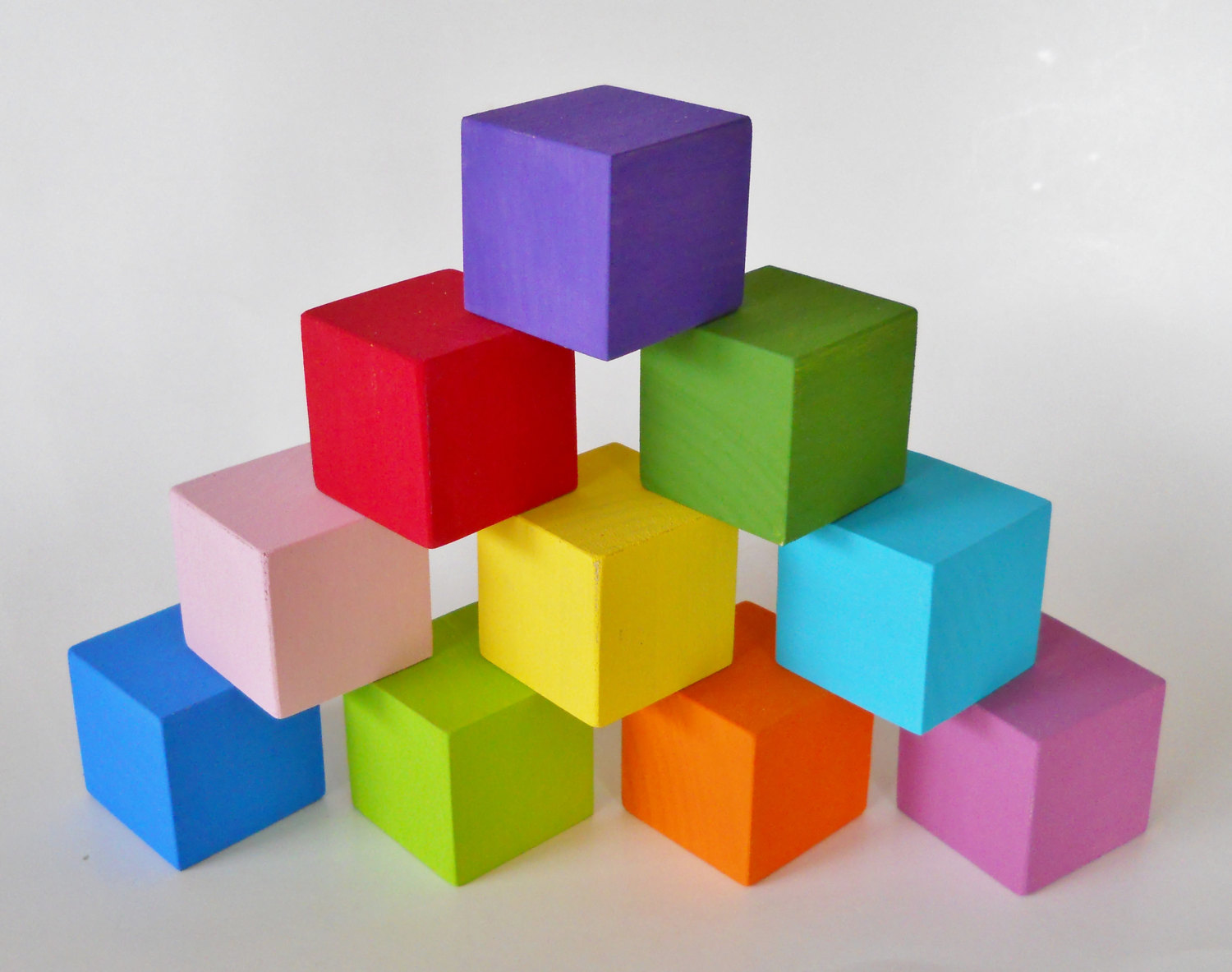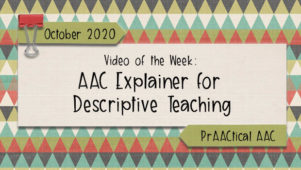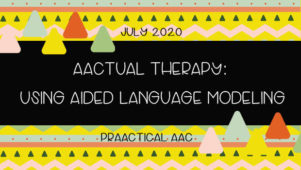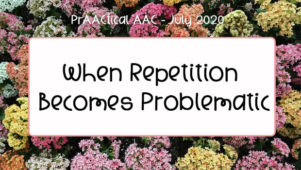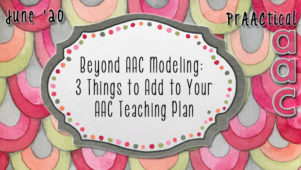Building Sentence Length: Say it Spontaneously
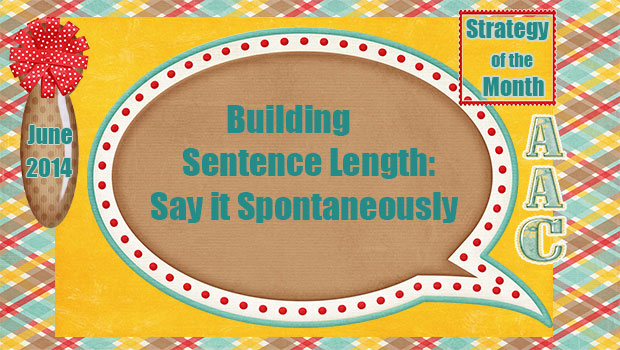
As beginning communicators start using single symbols to communicate, the next step immediately becomes to expand sentence length to two words, then three words, then more. Helping learners to use longer sentences spontaneously is the main goal. Teaching spontaneous use of longer sentences helps assure that those sentences can be used with many communication partners and in many contexts.
A great facilitator strategy for helping to build sentences is ‘add a word’ or expansions and extensions. This was mentioned in last week’s post: Helping Beginning Communicators Expand Their Sentence Length but is further delineated below.
What is it?
‘Add a word’ strategy is more formally called expansions and extensions. Expansions typically refer to adding a word with new conceptual knowledge while extensions add a word with new grammatical information. Expansions and extensions are a form of modeling and can be done both on a communication display as well as verbally. This strategy is for the adult facilitator/communication partner. It is a contingent responding strategy that follows the learner’s spontaneous communication utterances. Once the learner initiates communication, the facilitator responds by expanding or extending that utterance with an additional word.
How to do it?
Set up a communication temptation to elicit a spontaneous communication by the learner. Then, use wait and signal. If the learner uses a non-verbal communication such as a gesture, body movement or eye contact the ‘add a word’ by the facilitator is a one word model both verbally and on the communication display while simultaneously honoring the intent of the communication. For expanding sentences, if the learner spontaneously uses a one word sentence on the communication display (or verbally), the facilitator response is a two-word model on the communication display and verbally. And so on…If the learner uses a three word sentence, the model is a four word sentence. After the learner uses a four word utterances spontaneously, the next model would be five words. As we get to five word sentences and more, we use additional strategies for more complex sentence building (look for more on these strategies next week).
Samples/Examples
L= learner, F= Facilitator
L: ” more”, F: “more toy” (while giving the toy)
L: ” me “, F: “me go” (while pushing or making the child go)
L: “bad”, F: “It’s bad” (while making exaggerated bad face to indicate agreement with the communication intent)
L: “big push”, F: “big push car” (while quickly pushing car fast/in big way)
L: “different one now” F: “different one now please” (while giving a different ‘thing’)
Do This:
Use positive and enthusiastic vocal tone when expanding and extending
After several similar ‘add a words’, then use wait and signal strategy to see if learner adds an extra word
Use gestural cues on the communication display to encourage the learner to expand the sentence
Set up communication temptations that make it necessary to ‘add a word’. For example, with the example of “more toy”, have favorite color toys vs non preferred colored toys so it is important to add “more blue toy. After a few expansions by the facilitator, it will be likely that the learner will add “blue” so they do not get the non preferred color.
Not This:
“more what?
“good talking”
Only repeat exactly what the learner already said without adding a word
Filed under: Strategy of the Month
Tagged With: expansions, extensions, Language facilitation strategies
This post was written by Robin Parker
